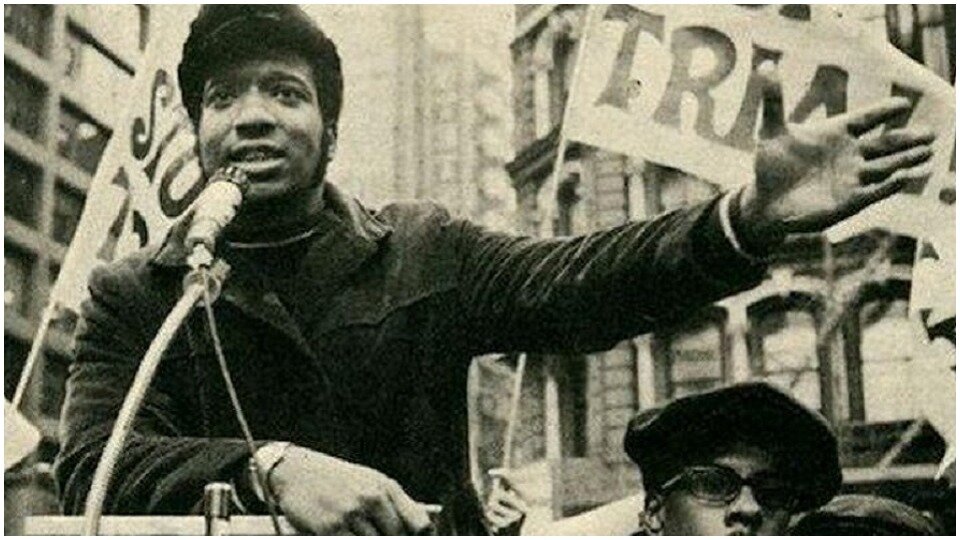Resistance & Reclamation
Week 10 - 10/31/2019
“Racialized space has come to be seen as natural in this nation…"the racial projects of U.S. society have always been spatial projects as well." (p.52)
- George Lipsitz, Black Spatial Imaginary
Class Recap
In this class we wrestled with the tensions of language and how we conceptualized resistance and reclamation. The essential questions that guided the discussion are How do we define resistance and reclamation? How are they different? What are the relationships between resistance/ reclamation, space, narrative-making, and art/creativity? What are the constraints of resistance and reclamation. The questions were grounded in the readings and produced generative dialogue that contributed how we conceptualize space and the imagination in the discourses about resistance and reclamation.
“Sometimes we overcomplicate organization, but daily refusals, showing up can be a way of building solidarity.”
Openings
In the beginning of the class we opened with a land acknowledgement in attempts to ground our conversation in the resistance efforts against erasure of the past and present. Specifically, we sought for the land acknowledgment to inform our discussion , not see it as separate nor use it as a “move to innocence”. Building from the land acknowledgment our group showed a video of community activists in Nashville protecting a family from ICE .
How do we define resistance and reclamation? How are they different?
TExts
Lipsitz, G (2011). “Black Spatial Imaginary” in How Racism Takes Place. Philadelphia, PA: Temple University Press. p. 51-70.
Liz Przybylski. (2015) Indigenous Survivance and Urban Musical Practice. Revue de Recherche en Civilisation Américaine [English], no. 5. (p. 1-14)
Gleeson, S., & Sampat, P. (2018). Immigrant Resistance in the Age of Trump. New Labor Forum, 27(1), 86–95.
Holpuch, A. (2018, October 18). “Resistance Zone’: the neighborhood where people train to confront ICE”. The Guardian.
Carter, P. (2003). “Black” Cultural Capital, Status Positioning, and Schooling Conflicts for Low-Income African American Youth. Social Problems, 50(1), pp. 136-155.
LOCAL VOICES: PODCASTS
Beth McConnell. Gentrification & Cultural Displacement in Philadelphia. JumpstartGermantown. Podcast Audio. June 30, 2009.
Paul Farber. For Freedoms Across 50 States with Artist Hank Willis Thomas. Monument Lab. Podcast Audio. Sept. 30, 2018.
Sergio Cea. #5 True Sanctuary, featuring Miguel Andrade- Juntos Communications Manager. Reclaim Philadelphia. Podcast Audio. April 17, 2019.
LOCAL VOICES: Videos
Andrew Ferrett, dir. & Sam Katz, prod. May 2014. “A Lost World (1600-1680).” [Episode]. Philadelphia: The Great Experiment [Series]. Historic Makings Productions. Web Video.
Patty Talahongva, dir. and Lucy Williams, exec. prod. 2011. Dance With Me: The Nanticoke Lenni-Lenape Indians of New Jersey. Penn Museum. Web Video.
Vanessa Graeber. 2014. “Opposition to Temple Stadium in North Philadelphia.” [Episode]. People Power Lunch Hour. [Series]. Philly Cam. Video Recording.
What are the risks and responsibilities of forms of public and community engagement, particularly those that endeavor to critique or transform power structures?
“Fred Hampton adresses rally in Chicago”. We have Hampton pictured here so that we never forget the very real cost of resistance and the lives taken in the name of Black liberation.
The Black Spatial Imaginary
The quote below from the reading is in conversation with the language we use to navigate discourse and action with respect to deliberate moments of resistance and efforts of reclamation.
“The Black spatial imaginary views place as valuable and finite, as a public responsibility for which all must take stewardship. Privileging the public good over private interests, this spatial imaginary understands the costs of environmental protection, efficient transportation, affordable housing, public education, and universal medical care as common responsibilities to be shared, rather than as onerous burdens to be palmed off onto the least able and most vulnerable among us” (p. 69)
Reclamation of What?
We tend to think of reclamation as a return of what is lost, but are there other ways? Some of the discussion we had revolved around the storytelling in hip hop music. For example, Nas’ song “everything” (2018), it evokes an intertextuality of sorts, this psalm reminds us that art is multimodal theorizing and it charges us to inquire about how we are changing/what we are changing. Holding the cultural derivatives of hip hop in tension with their capitalist influences and motives, we were eloquently reminded through the words of revolutionary Fred Hampton that “Theory is cool, but with no practice ain’t shit” (1969).
Remember black Philadelphia
Philadelphia as an important site of black freedom in the US (African American history, Great Migration), yet there is significant and escalating displacement of black people from the city.
Project started as a way of documenting and affirming sites that are being erased or made precarious in real time - e.g. Fairmount, West Philadelphia High School, Freedom Theater
Witnessing the configuration of histories, people, institutions
Elements of
mapping what has existed/does exist
Storytelling about places, spaces, and events
Archiving and documenting memory
Immersive media to capture spatial realities that are precarious
Supporting organizations and communities in preserving their own histories and legacies
Community archiving - partnering with communities, providing equipment and resources to document
Post-custodial model - Penn is not entitled to control the materials and production. Rather, support communities in doing the work that is already being done.
Preserving as an act of love, documenting and creating alternative archive
Connections with Price Lab at Penn (Digital humanities); many people in the city are doing work around commemorating and preserving
Some of the discussion we had revolved around the storytelling in hip hop music. For example, Nas’ song “everything” (2018), it evokes an intertextuality of sorts, this psalm reminds us that art is multimodal theorizing and it charges us to inquire about how we are changing/what we are changing. Holding the cultural derivatives of hip hop in tension with their capitalist influences and motives, we were eloquently reminded through the words of revolutionary Fred Hampton that “Theory is cool, but with no practice ain’t shit” (1969).




